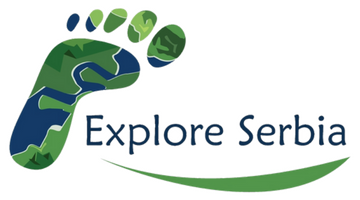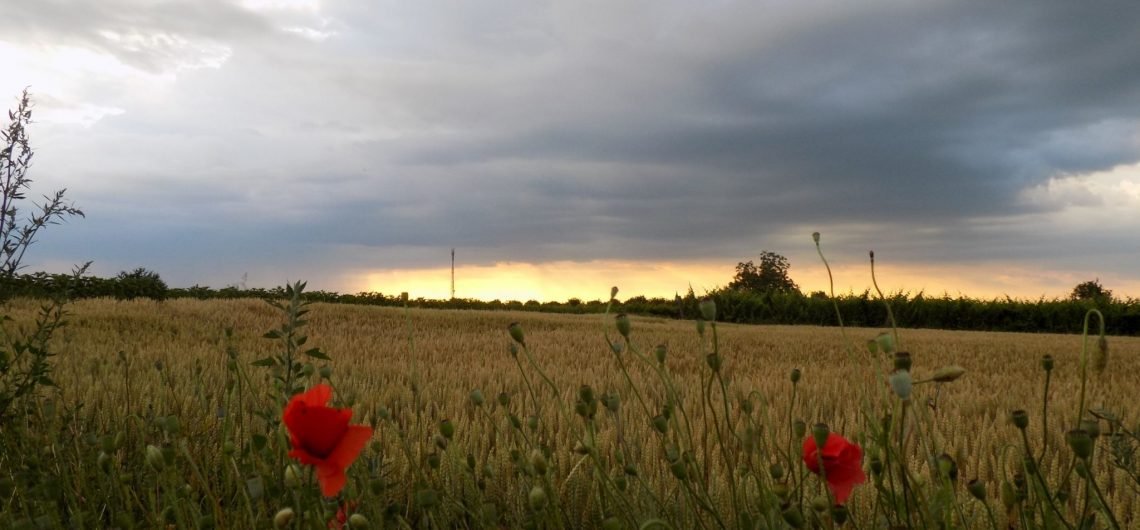Vojvodina is the northern part of Serbia.
On the geographical map of the world, there are landscapes of so unreal beauty as if they were created by artists, the landscapes 'painted' by a soul.
Luxurious castles, mysterious gardens, old windmills in the middle of grain fields, wide rivers that flow 'arm in arm' through fertile Pannonia plain, a sweep squeaking in the wind ... All of this is imaginative scenography for a romantic, emotional story where some common, quiet people have lived for years, the story of Vojvodina.
1) National Park Fruska Gora
Highlights: numerous hiking trails, medieval monasteries, wine tasting
Once it was a lonely island in the Pannonian Sea that used to cover the spacious Pannonian Plain a long time ago, before the time of man.
The mountain is covered by a thick forest, a hundred-year oak and birch trees, as well as the linden, a tree beloved by the Slavic people. The mountain, with the highest peak Crveni Čot 539 m (Red Cot), and much of its surroundings are a national park, that spreads across some 25.000 ha.
This mountain seems to have grown from cultivated Vojvodina Plain. It provides a lot of possibilities for hiking and biking tours with a lot of interesting trails.
If you want to go on a hiking tour we recommend circular hiking tour from Iriski Venac - the monastery of Staro Hopovo - the monastery of Novo Hopovo.

Mild slopes, centennial forests, famous vineyards, and numerous monasteries are the main features of this beautiful mountain.
There are picturesque monasteries where, in the eternal peace of God, the relics of great Serbian saints lie. Because of them, another name for Fruska Gora is Holy Mountain or Serbian Atos. These monasteries are scattered as pearls, on the slopes of Fruska Gora and have been kept from any evil, under the mountain wing. There are 16 Orthodox monasteries built at the end of XV and during the XVI century. They are the symbol of beauty, spiritual health, persistence in good and bad, and finally, the victory of religion over time. Some of them are Novo Hopovo, Staro Hopovo, Krusedol, Petkovica, Remeta, Hopovo, Jazak…

They have been waiting for the same place, for more than five centuries, under the veil of incense smell, to be revealed by those who search for their inner peace or for golden icons or frescoes.
2) Novi Sad
Novi Sad is an administrative and commercial center of the Serbian province of Vojvodina, which covers some of the richest farmland in the area.
Your exploration of the city can start with its downtown, where are most of its sights.

The Freedom Square (Trg Slobode) is downtown, with a neo-Gothic Roman Catholic cathedral (18th century) on the other side of the square, and the City Hall facing it on the other. The City Hall and Neo-Renaissance building are a copy of the Town Hall in Graz, Austria.
In the center of the square stands a statue of Svetozar Miletic, one of the Serbian politicians of the 19th centuryth century.

If you like visiting museums, there is the Museum of Vojvodina, Museum of Novi Sad – Foreign art collection, Novi Sad city museum, and Pavle Beljanski memorial gallery.
The sight you need to visit in Novi Sad is Petrovaradin Fortress.
This impressive fortress was referred to as the "Gibraltar of the Danube". The city's strategic position on the Danube also helped it to grow into a major port settlement.
It began life as a Roman fortress and various additions were made through the medieval period.
It was reconstructed in the late 17th centuryth century by the Austrians to serve as a key military stronghold against the Ottoman Empire. The French military architect Sebastian Vauban was enrolled and the project was started.
It takes time to get to know it because it is multi-layered and multi-storied – a masterpiece of medieval military architecture. It is a fortress that, in the underground, hides kilometers-long halls, warehouses, and rooms where people used to live under the siege. These rooms are impressive, even today, because of their air-conditioning system, heating, isolation, illumination, etc. The structure of the fortress also makes The Town Museum, The Gallery of Carpets, artists’ Quarter which gives the impression of being the Parisian quarter Mont Martre. From the terrace, there is a wonderful view of the town. Still, what is specific for Petrovaradin and Novi Sad is a “Drunken clock” on the Clock Tower. It is said to be fast in summer, but slow in winter, probably to be always in accordance with time, just like the town that it stands above.
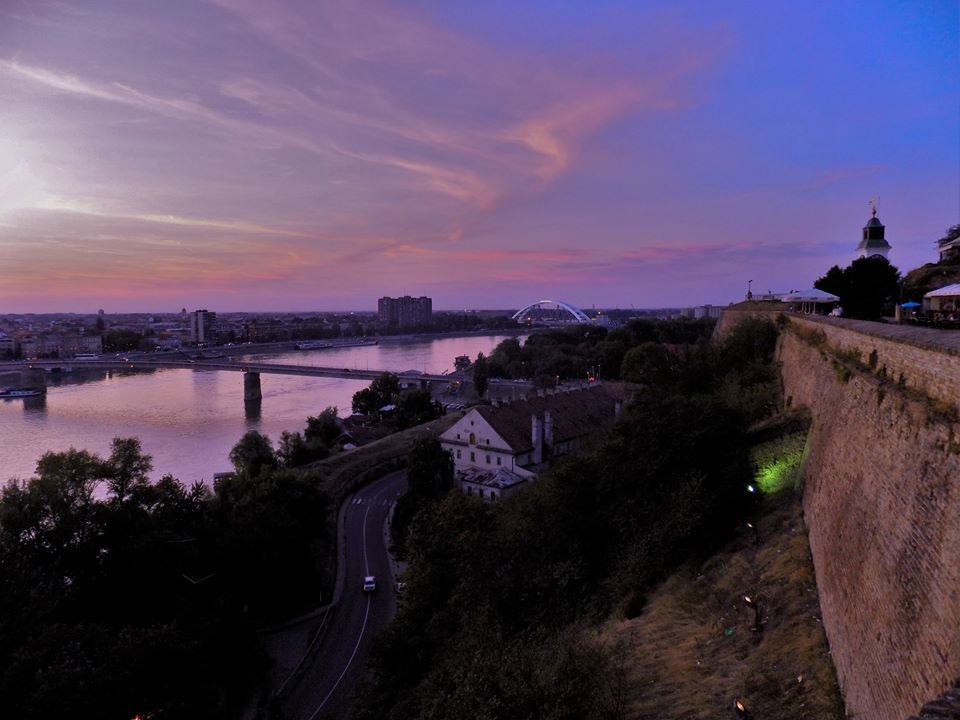
Petrovaradin Fortress in Novi Sad keeps its memories, as well as the monastery Kovilj. There is one of the biggest churches in Vojvodina, dedicated to archangels Mihajlo and Gavrilo, which was built in the XII century, not far away from Petrovaradin. Surrounded by the wall, it was built with the monastery Manasija as a model. In that monastery, the poet Branko Radicevic used to learn what it means to love his country and its people.
3) Sremski Karlovci
At the foothill of Fruska Gora, there is one more place, full of old memories as well as temptations. This little town has in its surroundings, a wide Danube, cultivated mountain, rich vineyards, unusual old buildings, and cultural monuments.
Archbishop Pavle Nenadovic got his reputation, as an architect of the Cathedral from the XVIII century, which was decorated by the same mosaic works as had been done in the famous Constantinople St. Sophia Church. It was dedicated to St. Nicholas, the protector of navigators and other passengers.
Sremski Karlovci is a town full of temptations. You should know how to resist the honey of Sremski Karlovci and more than that, how to resist the world-famous wine – bermet. It has a unique taste as a result of even twenty different herbs and spices. That wine was drunk by unfortunate passengers of the Titanic during their voyage too far away from America.
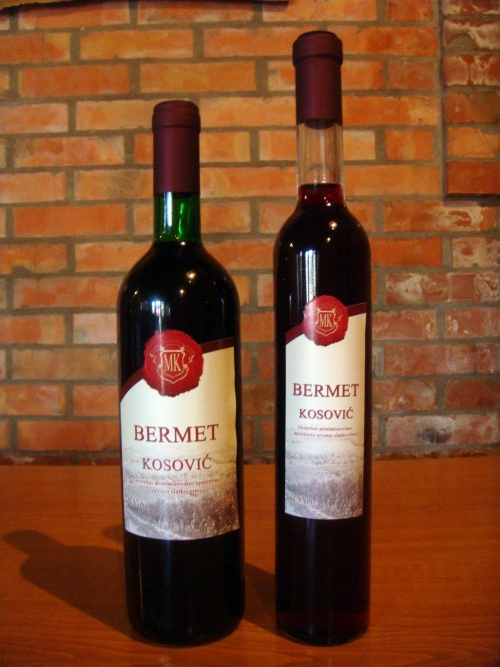
This town keeps the memory of the great Serbian poet and his enormous love. A well-known romantic writer Branko Radicevic fell in love with the fascinating Mina Karadzic, the daughter of Vuk Karadzic, the father of Serbian literacy.
Sights to visit in Sremski Karlovci:
- St Nicholas Orthodox Church
- The Catholic parish church
- Patriarch's Palace
- famous Grammar school from the XVIII century
- Branko Radicevic Square
- the observation point.
If you want to visit Sremski Karlovci you can combine it with Novi Sad. We recommend one-day sightseeing tour with a visit to the Krushedol monastery at Fruska Gora.
4) Fantast Manor
Well-preserved castles, in this area, still remember romances that took place inside their walls. The castle of Fantast had been built by the Dundjerski family, in Becei, in 1919. There a landowner Bogdan Dundjerski fell in love with a beautiful Mara. It lies 15 km from Becej on the road from Becej to Backa Topola. It is an unusual mix of styles – Baroque, Romantic, and neo-Classical. It consists of the Kastel, Old Manor, and the Chapel of St. George with an iconostasis by the famous painter Uros Predic.
The castle was transformed into a beautiful hotel where, for the short time, you can live the way that rich members of the Dundjerski family used to live. You can ride a horse or enjoy a traditional Vojvodina dinner listening to the music of tamburitza players ...
5) Subotica
Subotica is the second most populous center in Vojvodina, close to the Hungarian border.
The old Lady, as Subotica is called, wakes up on Friday when the promenade and restaurant gardens are full of people. Everybody who has visited this town agrees that dignity is its main characteristic. In “The Town of Fountains” scents mix and fulfill each other.
In its downtown, there are beautiful secessionist buildings you should see.
Sights to visit in Subotica:
There is the City Hall with a tower, which is the symbol and the place of Subotica. It was built at the beginning of the 20th centuryth century with fancy gables and towers. It is possible to go up to the City Hall on the 45 m clock tower. There you can see a beautiful view of Subotica and its surroundings.
Not far away, there is the monumental synagogue, a Franciscan monastery, and an Orthodox church.
The synagogue has a large hexagonal dome, with curved gables and large rose windows.
6) Palić
Lake Palic with a settlement of the same name is situated close to Subotica and near to the border crossing of Horgos. It has been a tourist tradition for almost 150 years. Its unique atmosphere makes this place ideal for leisure and relaxation.

The lake is the largest wind-deflated lake in Serbia.
Brothers Vermes organized a sports competition in 1881 in Palic, which was similar to the old Greek Olympic Games. After that, at the end of the 19th centuryth century, Palic becomes a famous sports center.
It is located 8 km from Subotica. The lake is a summer resort with a great climate (2.100 sunny hours per year).
The Great Park was built in 1842 to resemble an English garden. In the park are located the water tower, the Great Terrace (Velika Terasa), Summer Stage, a concert pavilion, and a zoo, set in the beautiful botanic garden.
The lake is shaped like an ellipse with a shore 17 km in length. The average depth of the water is about 2 meters. There is an abundance of aquatic life, especially a myriad of fish.
Beautiful Great Park is ideal for long, romantic walks. Thick treetops of old plate trees, chestnuts, and poplars change each other's place in this oasis of peace and beauty with rows of colorful flowers. Still, you can feel a fine coating in every detail of this romantic postcard. In faded color on the facades of old villas in fine, contours of 'President' hotel, rustic - work of 'Small inn', open-air summer stage, in the female and male strand (bathing beach).
If you want to explore this part of Vojvodina, we recommend you a one-day sightseeing tour. You will visit the Dunjdir Castle, the winery Zvonko Bogdan, Subotica, and Palić where you will taste traditional Vojvodina meals in one of the farms.
7) Imperial swamp
Carska Bara is the largest individual bog in Serbia, located in the municipality of Zrenjanin. It is a part of Vojvodina called Banat. The reserve is a complex of various wetland ecosystems that include lakes, swamps, meadows, and forests.
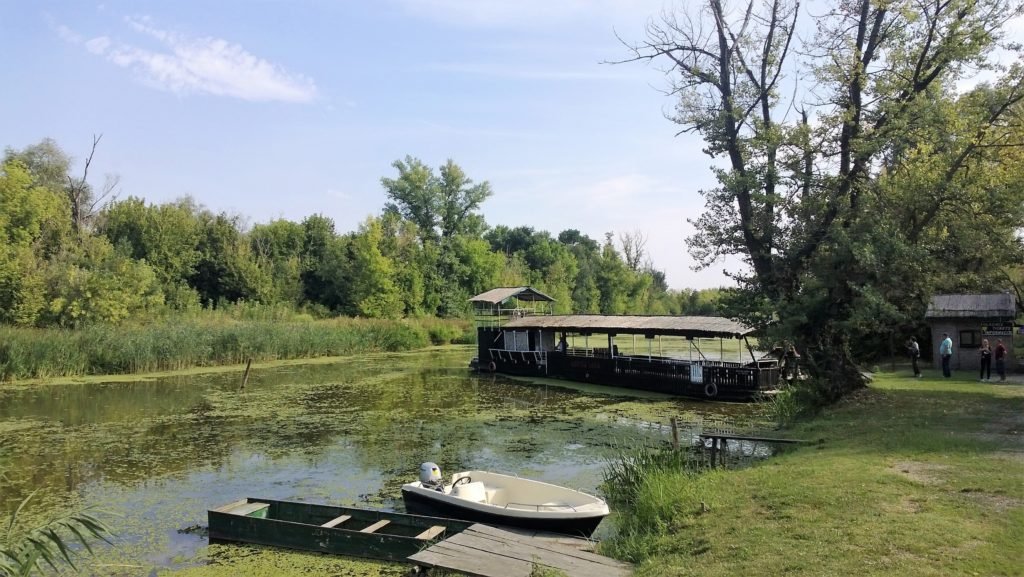
Along with the neighboring pond of Stari Begej - the old arm of the Begej river, it forms the special nature reserve "Carska Bara". Wetland consists of many smaller bodies of water: rivers, canals, lakes, and ponds. It is covered with reed beds, willow thickets, and rushes and it is known for its color diversity. The central, lake section is famous for its blue, clear water, while the surrounding salt marshes have white and yellow water, all within green forests.
Carska Bara is best known for its abundant bird life, the first ornithological exploration of which began in the late 19th century.
There are 240 bird species recorded in the area. There are thriving colonies of herons (gray heron, little egret) and cormorants (including a pygmy cormorant). Other species include buzzards, Eurasian sparrow-hawks, common spoonbills, western marsh harrier, Montagu's harrier, red-breasted goose, osprey, graylag goose, stork, and woodcock etc. Some 110 bird species are migratory.
Herons are considered the most important for the ecosystem. They nest in large colonies that are periodically moved from one locality within the reserve to another, based on the abundance of fish and its successful spawning.

Things to do in Carska bara
It can be explored by boat cruising with a local guide. It is possible to take a hiking tour around it. Bird-watching tours are popular too. If you like more adventure, we recommend you take quads-ride in the surrounding. Thereafter, you can relax and have lunch or dinner in the nearby ethno village Tiganjica.

8) Deliblato Sands
The Deliblato Sands is the largest sandy terrain in Europe. Once was part of a vast prehistoric dessert, having originated from the withdrawal of the Pannonian Sea.

They are home to many endemic species of plants and animals that are rare or endangered in Europe and worldwide. Due to its forest and its surroundings, it was declared a Special Nature Reserve. On a national level, it represents a natural asset of special importance falling under category I protection.
It is located in southern Banat, situated between the river Danube and the southwestern slopes of the Carpathian Mountains. The sands are named after the village of Deliblato, in the municipality of Kovin. Its main masses are elliptical-shaped hills with steppe grassland plains and steppe forests.
Things To Do in Deliblato Sands
The best way to explore it is on foot. There are several hiking trails that are marked very well. The very attractive part is on the northeastern edge. There are beautiful Zagaj Hills - attractive globular hillocks. They are ancient sand dunes, partly covered by the forest, partly with steppe vegetation.
Sand dunes are very interesting for an off-road ride. The diversity of bird species attracts birdwatchers.
One-day hiking tour in Deliblato Sands
9) Zasavica
The special nature reserve Zasavica is located just several kilometers across the Sava River from the town of Sremska Mitrovica.
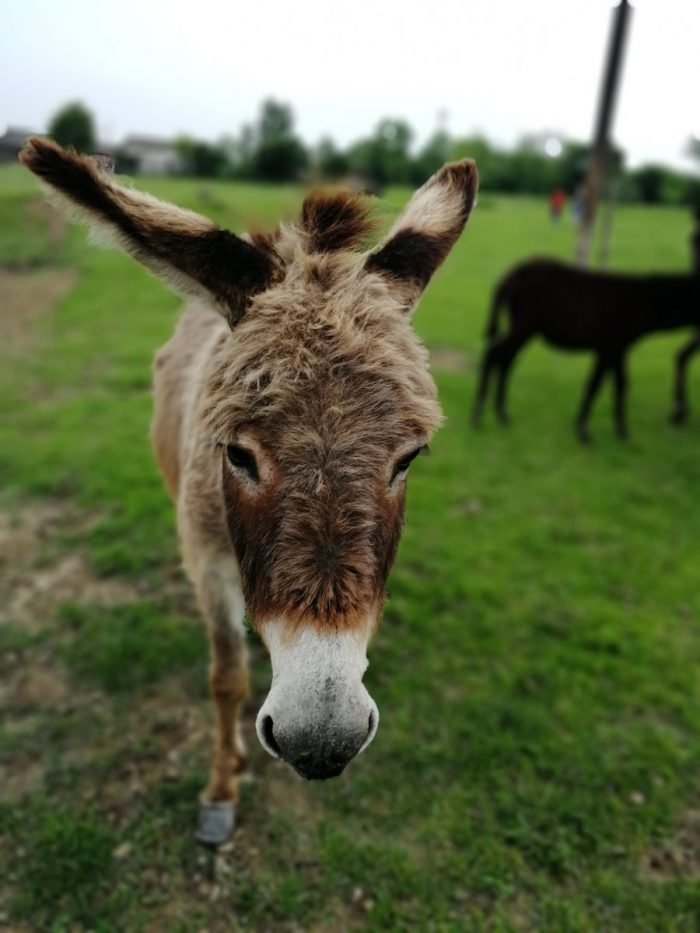
With Obedska Bara and Carska Bara, it is one of the major wildlife refuges and one of the last authentically preserved wetlands in Serbia. Zasavica consists of around 2.000 ha of protected wetland made up of meadows, canals, creeks, and the Zasavica River itself. The area was first put under protection in 1997. There are over 600 species of plants are recorded in the reservation. Several of them are endangered natural rarities. There are 185 species of birds in the reserve, of which 120 are residents. Because of such a large number of birds, including rarities like night heron and spotted crake, Zasavica is included in the list of IBAs, (important bird areas). Since 1998, 20 artificial nesting platforms have been placed throughout the reserve.
Zasavica is the location of the only farm of the Balkan Donkey on the territory of the former Yugoslavia. The farm was founded in the early 1990s and holds some 120 donkeys. They are kept for meat but mainly for their milk, which is used to make the pule cheese. It is one of the most expensive in the world with a price of 1,000 euros per kilogram.
Things to do in Zasavica
There are several ways to experience this wonderful special nature reserve. You can take a boat ride with a guide, as well you can go on a bird-watching tour. You can also buy cosmetics products made from donkey milk.
Our recommendation for the one-day tour where you can explore this part of Vojvodina is:
-
A boat ride in Zasavica, sightseeing in Sremska Mitrovica, and short hiking and relaxation at Fruška Gora
10) The Island of Krčedin (Krčedinska Ada)
The Island of Krčedin or Krčedinska Ada is a river island in Serbia. It is located on the left bank of the Danube across the village of Krčedin, in the municipality of Inđija.
The island is part of the much larger Special Nature Reserve Koviljsko-Pertovaradinski Rit - a wetland along the Danube.
The island is roughly shaped like a rounded triangle, with the top on the north. It is located in the valley of the Danube and was created when Danube shifted its course to the south and cut through its own meander.
On the island, there are 172 bird species, of which 103 are declared rare. Among them are the white-tailed eagle, the great white heron, the black stork, the Eurasian eagle-owl and the Saker falcon.
Husbandry
Krcedin Island is one of the largest remaining natural ponds in the Danube region, known for traditional stock breeding, with only basic human interference.
The villagers from Krčedin were the first who started transporting their livestock to the island, by the ferries, in the 19th century. The animals are transported in the early spring and left until the late autumn to live completely free as the island is uninhabited, without natural predators, and with a preserved natural habitat since it is undisturbed by urban development.
The livestock includes horses, sheep, cattle, pigs, and donkeys. The well-fed animals and their young-born on the island are returned to the mainland, into the stables only when it gets too cold or rainy. Horses and pigs are sometimes left on the island even during the winter. Some rare breeds, like the mangulica pigs, the local breed of the shepherd dog pulin, or the Podolian cattle, are also kept on the island. There is also a lot of poultry, like hens, turkeys, and peacocks. There were 80 Podolians in 2017, out of 400 in the entire Serbia.
As of 2017, the island numbered 1,000 cattle and pigs, 200 horses and over 100 Balkan donkeys. Donkeys are becoming more and more popular, due to the high prices of their milk. In the 1990s, however, over 6,000 animals were kept on the island.
Things to do on Krčedin Island
There is a possibility to go on photo safari-like tours to the island from May to September. They are conceived as one-day excursions with small groups of visitors.
Below you can find all the mentioned places in Vojvodina on the map

